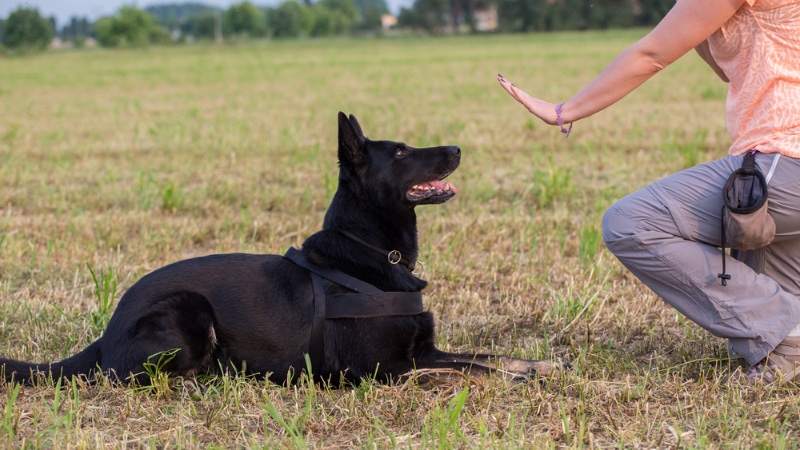
Teaching your dog hand signals for dog training is one of the best choices you can make for your dog’s future. Teaching your dog hand signals on top of voice commands adds a layer of security and a sense of normalcy for you and your dog. If you feel you’ve waited too long to try, there’s no such thing as “you can’t teach an old dog new tricks.” Dogs respond very well to visual cues and will enjoy spending some one-on-one time with you while training. Here are 11 common commands you can start teaching today.

The Benefits of Using Hand Signals
At some point, your dog may lose their hearing as they age and it will be very difficult for both of you to understand how to live day-to-day life. But if you’ve already taught your dog basic hand signals, transitioning into the new normal won’t be so bad.
You may also come across a situation where you need your dog to quietly follow through with a command. An example would be if you’re on a walk and you see a loose dog that could potentially be a threat. You don’t want to loudly say “come” or you might attract the other dog’s attention. A hand signal can usher you into a safer spot without escalating the situation.
The 11 Hand Signals for Dog Training
1. Come
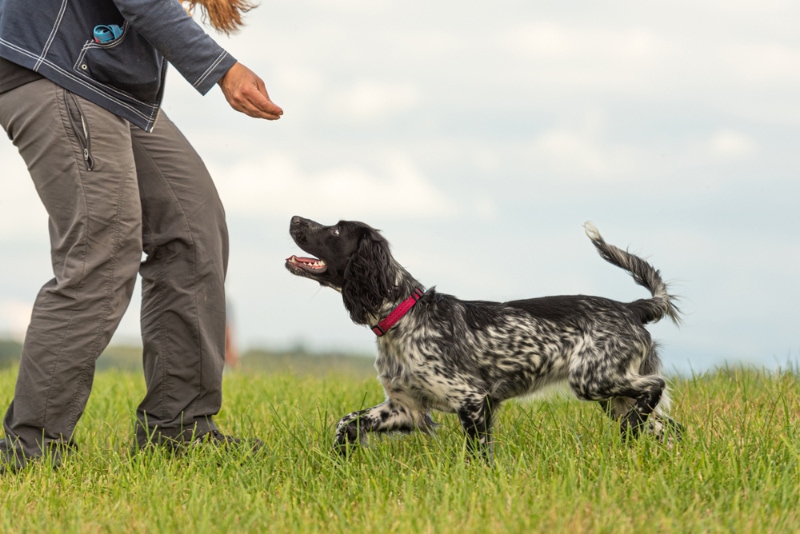
Come, or recall, is an essential command for all dogs. This command teaches your dog obedience, and reliability, and ensures their safety as well as other dogs and owners.
To signal:
2. Sit
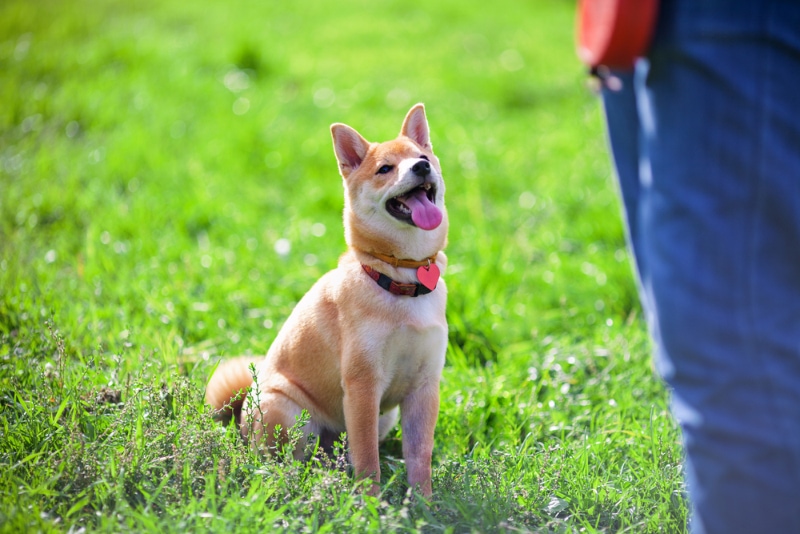
One of the most basic commands, sitting teaches your dog to relax before receiving attention or a treat. Sitting also teaches your dog self-control.
To signal:
3. Lay Down
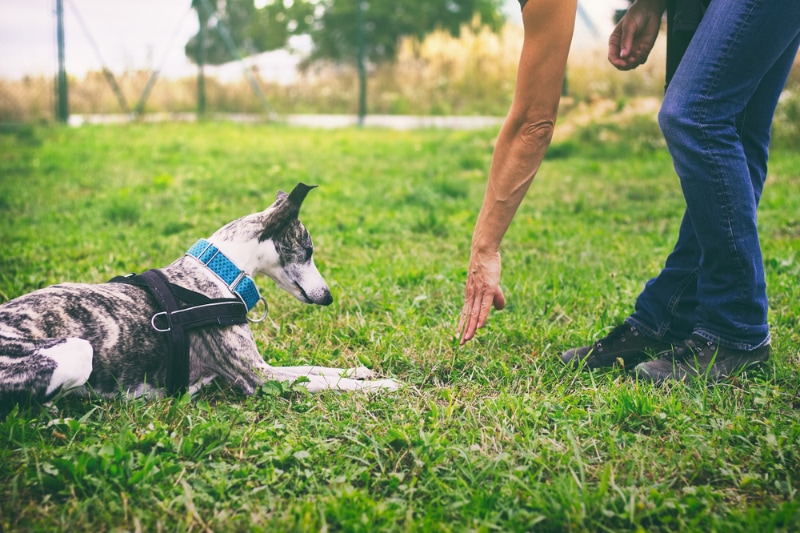
Like the sit command, the command to lay down teaches self-control, but at a deeper level.
To signal:
4. Spin

A simple trick, the spin command is both cute and helpful if you were to enter your dog into a dog show.
To signal:
5. Rollover
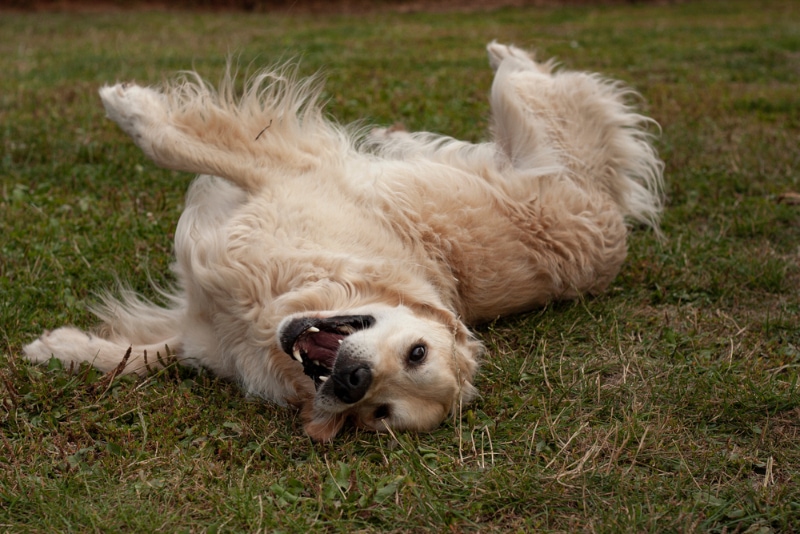
Rollover is a cute command that often ushers in belly rubs but can be used for practical reasons as well, depending on the scenario.
To signal:
6. Stay
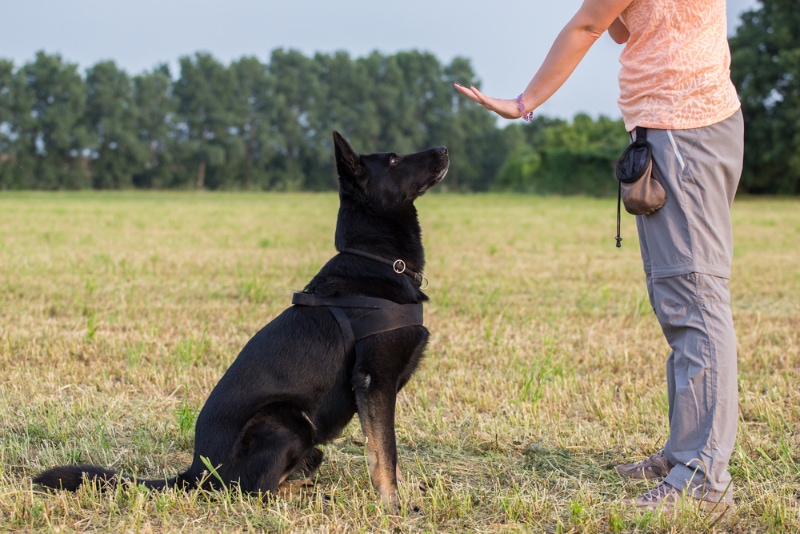
Signaling your dog to wait helps your dog stay in one place while you walk away. Dogs will learn that they should listen to what you have to say next. The free command is typically what follows.
To signal:
7. Free
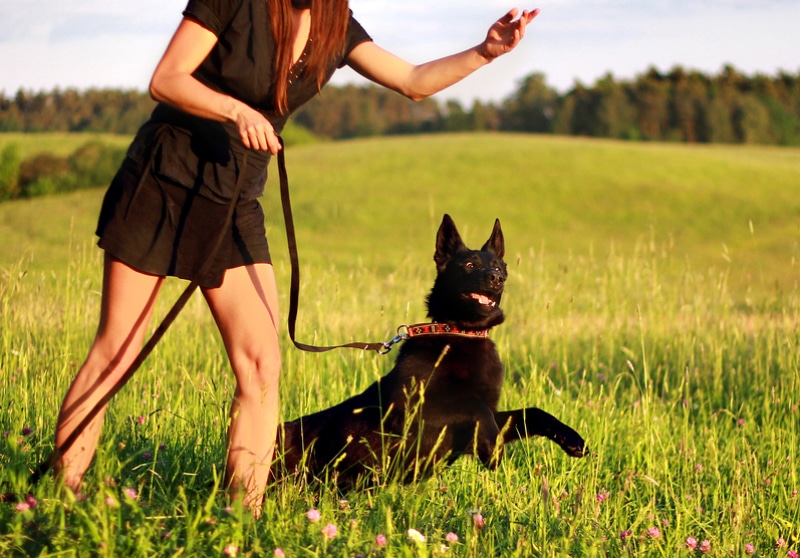
The free command releases your dog of whatever command you are executing, such as sit or stay.
To signal:
8. Drop
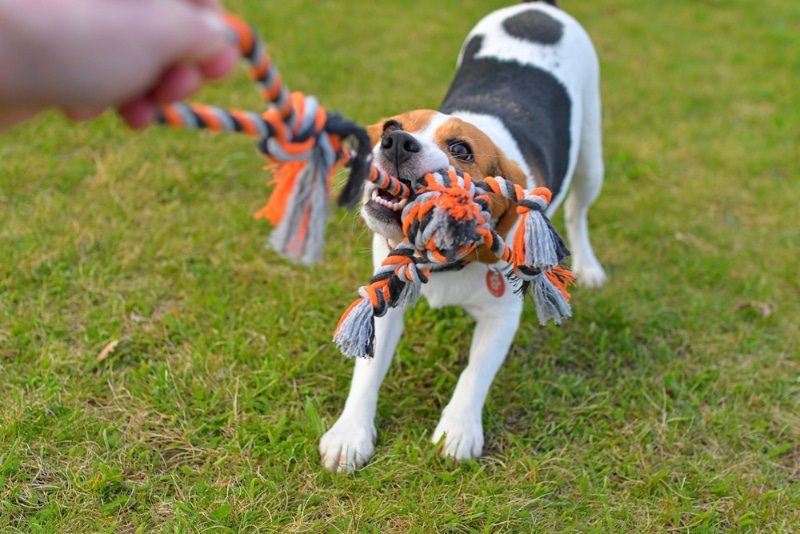
Drop is an effective command to teach your dog to release its grip on something such as a toy.
To signal:
9. Fetch

This is a great command to teach your dog so you can enjoy playtime even if hearing is an obstacle.
To signal:
10. Crawl

Crawl is a cute trick but can also be used in emergencies if needed.
To signal:
11. Shake

The shake command is a cute and easy trick for dogs, especially for older dogs with arthritis who can’t partake in physically demanding tricks.
To signal:

Adding Hand Signals to Already-Learned Behaviors
If you’ve already taught your dog voice commands but have never tried hand signals, or perhaps your dog went deaf before you could try, don’t worry; dogs respond very well to visual cues and oftentimes even better than verbal cues.
The key is to teach your dog to focus rather than relying on voice fluctuations, but the methods will still be the same: show the hand signal, teach the desired behavior, and offer a treat.
When you begin, choose a few hand signals to master then move on to others. Be consistent with training and choose high-value treats that are quick to eat.

Conclusion
Teaching your dog hand signals is an excellent way to ensure security for the future. Your dog may go deaf, or you might find yourself in a situation where you need to be quiet but give a command. Hand signals offer an extra layer of certainty in training. Plus, dogs respond better to visual cues anyway. Why wait to get started?
Featured Image Credit: Luca Nichetti, Shutterstock

